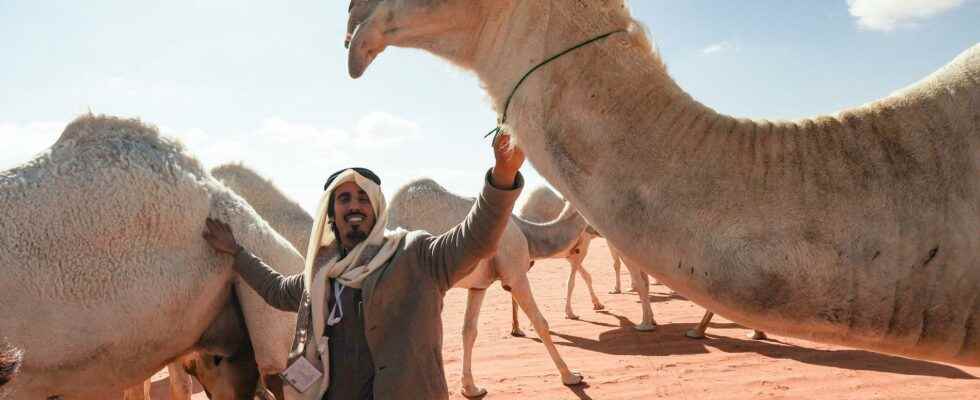Published: Less than 40 min ago
It’s a unique collection of sounds – but they allow herders to comfort their camels and warn them of approaching threats.
Saudi Arabia’s camel whisperers have a unique way of communicating with their animals. The tradition, recently listed as cultural heritage, is passed on between generations.
To the untrained ear, Hamad al-Marri’s cries mean nothing, but to the animals scattered across the vast Saudi desert landscape, the message is clear. In an instant they gather behind their shepherd to begin their trek across the red sand.
– There is a special language between a camel owner and his camel, says 36-year-old al-Marri, who owns 100 camels that graze in the arid landscape around 15 miles northeast of the Saudi capital Riyadh.
The method of communication, known as alheda’a, was recently added to the United Nations cultural agency Unesco’s list of intangible cultural heritage – traditions, customs and practices passed down between generations, often for centuries. The list includes roughly 600 intangible cultural heritage sites worldwide.
Gather the flock in case of threat
Unesco describes alheda’a as an oral polyphonic expression that can be used in combination with gestures or musical instruments. The hope is to protect the tradition, which is mainly used in Saudi Arabia, Oman and the United Arab Emirates, and work for its continued survival.
A skilled camel herder can use his voice to comfort an animal, make it open its mouth, kneel or change direction. The “language” can also be used to quickly gather the flock in case of immediate threats, such as for example an approaching sandstorm.
– The camels recognize their owner’s voice and answer him directly. If someone else calls out to them, they don’t answer, says Hamad al-Marri.
Want to teach the children
Alheda’a consists of a unique collection of sounds and sounds that are passed down from generation to generation within families and communities.
Saudi camel herder Mansour al-Qatula learned the tradition just like that – by watching his father and grandfather talk to their camels as a small boy. Now he hopes to pass on the ancient knowledge to his own three children.
– We have inherited camel husbandry in my family for over 200 years. Now my kids love it and constantly ask to come here. The camels recognize their voices too, he says.
Facts
Camel animal
Camels (Camelidae) are a family in the order pair-toed ungulates. The family today includes six living species: dromedary and camel as well as llama, guanaco, vicuña and alpaca.
The animals are large herbivores that have a three-parted digestive system, unlike the four-parted digestive system of other ruminants. Camels and dromedaries, which often live in dry and hot areas, can lose large parts of their body weight through dehydration without being harmed. The humps of camels are used for fat storage and the animals can therefore go a long time without eating.
Camels are walkers, which means they put both legs forward from the same side almost simultaneously.
Facts: The National Encyclopedia
Read more
